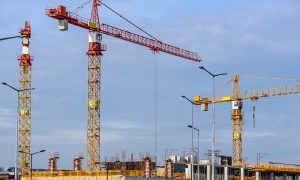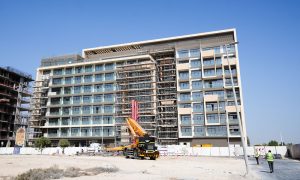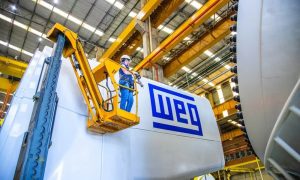The industrialisation of construction
Take a moment and consider what is happening on our planet. There are global and industry issues creating human challenges that will be amplified in the future. There is also the opportunity of our industry benefiting from innovative ways in buildings being delivered. There is a pathway for our construction sector to make a difference to our future.
Global Perspective
Population growth
The UN predicts there will be over 10 billion people alive by 2050. In the next 30 years, we will grow our population by 30%, after being on Earth for thousands of years.
Urbanisation
Today, 55% of the world’s population lives in urban areas, a proportion expected to increase to 70% by 2050. 3.85 billion people live in cities now. In 2050, 7 billion people will live in cities. Cities will need to double in size and many cities will need to be created.
Dubai has arguably been created over the last 20 years. Is this going to happen in other parts of the world with as much vision, vigour and commitment? If so, how? The same way we have delivered buildings historically?
These global occurrences will have vast impacts globally: on fiscal policies, foreign policies, agriculture, infrastructure, housing, hospitals, schools, transport systems, old age homes, food prices – in fact, on everything.
How people live
What about the millennials, going forward? The young people who do not want to own a car or own an oversized home with a garden, swimming pool and lawnmower? Are these going to become trophies of a past generation that prioritised different things? Perhaps renting an appropriately sized apartment will become the norm, mostly dictated by necessity and need rather than now antiquated motives.
Industry Perspective
Inefficiency: Our industry is still incredibly labour-intensive and notoriously inefficient. McKinsey and many other adept organisations and industry experts have succinctly highlighted how inefficient we are as an industry compared to others; we are often termed the laggard industry (Reinventing Construction: A Route to Higher Productivity, McKinsey).
Skills shortage: Younger people are looking for jobs that are less physical with more reasonable working hours. Our industry is known for being hard and intensive. Tradesman are becoming harder to find and more expensive to pay.
The industry bad habit – Get the design right upfront: This dog just will not hunt!
Probably the worst habit we have managed to incubate in our industry is starting a construction project when the information is not ready. Tender documents are issued but the drawings and specifications are not complete, and may be a hybrid of a few projects developed over time. The client may have pushed the consultant’s fees to the point of failure, whereby it doesn’t have the budget or time to produce an all-encompassing set of project documents; or a substandard design document may have been floated to the market. Contractors price the works off the tender documents issued, the prices are returned, and they are invariably too high.
We then begin the dreaded value engineering sortie. VE decisions are made, not really well documented, no revised IFCs (drawings Issued for Construction) are issued, and before we know it we have kicked off a multi-million (or billion) dollar venture with two left feet. The project starts its life in a world of grey with the wrong information at hand, and the unfortunate experience of a combat project kicks off (Raising the Bar in Construction Project Teamwork: Combat Project Teams, Jim Eisenhart).
A project of this nature goes against our very DNA: we contractors are delivery-based souls who want to deliver a project on time, on budget and at a profit. The most successful projects I have worked on over the past 25 years have been facilitated by delivery-focused teams. Projects succeed in an environment of timely good decision-making and leadership, coupled with an excellent design team.
The opportunity – What we can do
Complete the design in BIM: The project does not start until the design is complete and signed off.
Design for manufacture and assembly (DFMA): Use this as the basis for concurrent engineering input, to simplify the product, reduce manufacturing and assembly costs, and speed up the process. DFMA is applied in order to eliminate waste or inefficiency, and is a component of lean manufacturing.
Manufacture off-site: Execute a vast majority of the work in a factory. Productivity is increased and resource up-skilling is facilitated.
The design is 100% complete before manufacturing starts. This makes everyone do their job up front, and changing once manufacturing starts is not a simple instruction – it has a mission-critical impact and the factory process is critically affected. Would you start manufacturing the chassis for a car before you had designed the engine, doors, wheel sizes and hubs, fuel tank capacity, wiring, exhaust and safety features? In construction, we do this all the time.
Conclusion
Our buildings need to become more similar, and unfortunately the bespoke once-off iconic design so many clients want needs to become the exception, not the rule. We have a responsibility as an industry to become a lot better in how we deliver a product to the market. How and where people live in the future is going to come under more and more pressure. We need to be looking at the right products and construction delivery mechanisms to provide solutions.
Singapore has mandated modular construction methods and created standards for this sector in our industry, driving the industrialisation of construction. This method of construction is a solution that needs government support and commitment to succeed. There are most definitely firm barriers to entry and the risk profile is convoluted, but construction has never been easy and we are slow to adopt change.
We need to drive change! The naysayers may continue to be laggards, but we need to remain visionary and innovative, and navigate a path into the future that overcomes some of our global and industry challenges.
























